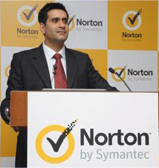 Symantec released India findings from the 2013 Norton Report, which reveals that India is among the world’s top five countries for the highest number of incidences of cybercrime such as ransomware (11 percent), identity theft (11 percent) and phishing (9 percent). With cybercriminals becoming more sophisticated and targeted the average cost per cybercrime victim is in India is up at USD207 from USD192 last year.
Symantec released India findings from the 2013 Norton Report, which reveals that India is among the world’s top five countries for the highest number of incidences of cybercrime such as ransomware (11 percent), identity theft (11 percent) and phishing (9 percent). With cybercriminals becoming more sophisticated and targeted the average cost per cybercrime victim is in India is up at USD207 from USD192 last year.
“At first glance of the India findings, we were happy to see a significant drop from last year in the total number of victims and total cost of cybercrime, but a closer scrutiny revealed an alarming trend,” said Ritesh Chopra, country manager, Norton by Symantec. “Today’s cybercriminals are using more sophisticated attacks, such as ransomware and spear-phishing, which yield them more money per attack than ever before. With 66 percent of Indian consumers using their personal mobile device for both work and play, this creates entirely new security risks for enterprises as cybercriminals have the potential to access even more valuable information.”
According to 2013 Norton Report, India appears to be the ransomware capital of Asia Pacific with 11 percent victims of this form of virtual extortion. In addition to Ransomware, in the last 12 months, 56 percent of cybercrime victims in India have experienced online bullying, online stalking, online hate crime or other forms of online harassment.
This year’s report further reveals that as consumers become more mobile and connected, these conveniences often come at a cost to them and their security. In fact, a staggering 63 percent of smartphone users in India have experienced some form of mobile cybercrime in the past 12 months.
The 2013 Norton Report also finds that many consumers are engaging in risky behavior that has them playing a game of chance with their private information, putting them at risk of becoming the next victim of online criminals. A large percentage of Indian Wi-Fi user’s access social networks (61 percent); shop online (44 percent); and access their bank account (42 percent) through a public or unsecure Wi-Fi. Adding to the risk are social network users in India who share their password with others (18 percent), don’t log out of each session (21 percent) and connect with people they don’t know (18 percent).
Survey results show that this isn’t entirely due to lack of awareness. In fact, more than half (55 percent) of consumers surveyed admitted that the convenience of being constantly connected outweighed any potential security risks. Even when 57 percent said that there is no such thing as “online privacy” in today’s world and 61 percent assume that “everything they put online will / can be seen by any and every one.



